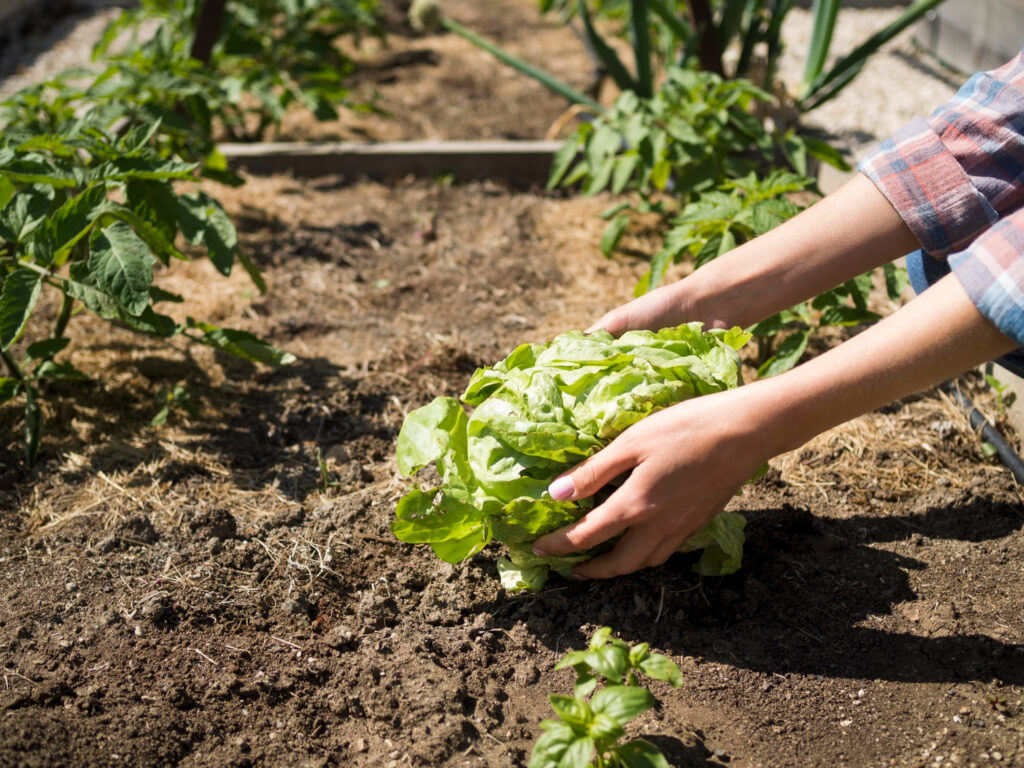Introduction: Nourishing Your Garden, Nourishing Your Plate
There’s something incredibly satisfying about cultivating your vegetables from the seed to the harvest, from the garden to your table. No matter if you’re a veteran gardener or are a newbie with an eye for green, growing vegetables will open the doors to an array of tastes of nutrients, and food items within your backyard. In this guide for beginners to vegetable gardening We’ll go over the fundamentals of gardening with vegetables, helping you to create a healthy garden and reap a hefty produce of delicious, fresh locally grown vegetables.

1. Planning Your Vegetable Garden
Before you plant begin planning your garden. Think about factors like the space available, the sun exposure, the quality of soil, and access to water. Create a rough sketch for your gardens considering the size of the mature plant as well as the spacing needs. Combine vegetables that have similar growth requirements to make the most of the area and resources.
2. Picking the right vegetables
Picking the best plants for your garden is essential to a fruitful harvest. Start by choosing the vegetables both you and the family members enjoy eating and that are suitable for your local climate as well as conditions. Think about the length of your growing time and select vegetables that can be grown and harvested in that time frame. Some of the most popular options for beginners in vegetable gardens are peppers, tomato salad, cucumbers, lettuce beans, and carrots.
3. Start with Seeds or from Seedlings
Decide if you would like to plant your vegetable garden from seeds or buy seedlings from the nursery. Seeds from the beginning offer an array of options and are more affordable however it takes more time and care to ensure that seedlings are nurtured until they reach the stage of maturation. Seedlings purchased from seedlings provide the advantage of a head start and also guarantee greater success however it can restrict your choices for the varieties of vegetables you can grow.
4. Preparing the soil
Healthy soil is the base of a healthy vegetable garden. Preparing your soil involves eliminating any weeds, rocks, or debris and releasing the soil to an average depth of 6-8 inches. Incorporate organic matter like manure that has been aged, composted, or composted leaves to improve the soil’s structure fertility, fertility, and retention. Analyze the soil to determine the pH and levels of nutrients, and then adjust them as necessary to provide the best soil for your plants to grow in.
5. Care and Planting of Your Vegetables
When you plant your vegetables be sure to adhere to the spacing and depth guidelines specific to the plant. The seedlings that have been planted should be watered thoroughly and ensure consistent water during the entire growing period, particularly during the summer heat. Mulch around plants to reduce weeds, keep moisture in check, and control soil temperature. Be aware of any pests or illnesses, and take proactive steps to stop or minimize issues that arise.
6. Harvesting Your Bounty
As your plants mature take them in at the peak of ripeness to get the most nutrition and flavor. Different vegetables exhibit different indicators of ripeness. Therefore, you should make sure you are aware of the indicators of harvest for each crop. Use sharp pruning tools or scissors for harvesting vegetables so that you ensure that you don’t damage plants. Also, take pleasure in the fruits of your work in the fresh garden or stored to use later.
Conclusion: Enjoy the fruits of Your Labor
The process of planting vegetables will bring you growth, excitement, and tasty benefits. It doesn’t matter if you’re establishing a tiny container garden on your patio or tending a large plot of land within your yard, the excitement of watching seeds germinate while plants grow and the fruits and vegetables mature is unparalleled. With just a bit of planning, perseverance, and attention to detail you can have an abundant vegetable garden that is nourishing for the body and the soul, giving fresh, organic food for your table as well as an experience of being connected to nature.
Happy planting And may your yard fill up with the bounty of nature!
Checkout: Top Free Home Gardening Books